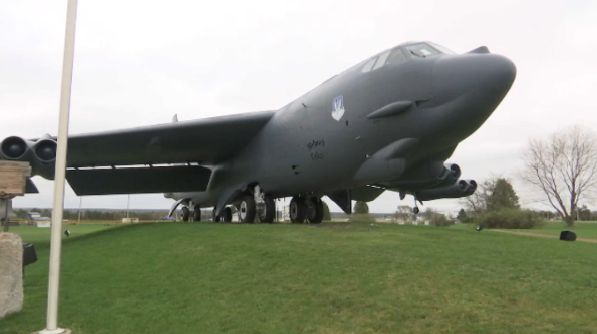ROME, N.Y. -- There was nothing small-scale about Griffiss Air Force Base in the 1990s.
"It was a city within a city. It had everything in it. It had a commissary, a gas station, a hospital, housing, a bowling alley," said veteran Michael Grogan. He was stationed at the base.
Realignments were happening across the country, and a few years after the first scare, it happened to Griffiss.
Now-Senator Joe Griffo was mayor.
"In 1993, the next round of the base realignment closure commission, Rome was identified and targeted for realignment technically, but for all practical purposes, it was a closure," Griffo said.
Veteran Kevin Piatt was stationed there at the time. "I had come from a base in Texas that had closed under the BRAC so I basically went from base closure to base closure," he said.
Unlike some bases, when it came to Griffiss, it didn't all close, and Griffo thinks that's because it didn't make sense.
"They couldn't justify what they were trying to do financially so they came in and realigned it, and they left a couple of the assets here which they came back for later," he said.
In the balance were people's livelihoods.
"Back then I called it, it was akin to 'economic Armageddon'," said Griffo.
"You go from like 1994, 1995, 1996, you see the student enrollment, specifically at RFA will have dropped significantly," said Rome Historical Society Executive Director Arthur Simmons.
Local leaders scrambled, trying to keep the realignment of Griffiss from unraveling the community it built up.
They started with a Greater Rome development plan.
"The State of New York, at the time under Governor [Mario] Cuomo put together the Griffiss Local Development Corporation," said Griffo.
"That was set up essentially to deal with the transition from an Air Force Base to what is now a business and technology park with a county airport," said Mohawk Valley EDGE President Steve DiMeo.
The work was helping but something was still needed to reenergize the area, and that something ended up being Woodstock '99.
"No one could have predicted how that event was gonna end," said Douglas Flanagan. He was the Program Operations Manager for WUTR at the time.
"Some experienced it and it was great," Simmons said. "Obviously locally we think about the aftermath."
"We started getting calls, 'things are getting crazy here. People are starting to throw stuff around, burn stuff'. This is after three or four days with these people in the blistering heat on mostly asphalt with ridiculously high prices of food, water," Flanagan said.
Then-Mayor Joe Griffo supported having the event for three reasons.
"Short term economic benefit," he said. "It would gain exposure for the region globally, not only domestically but globally, and it would also give the community the opportunity to believe in themselves again."
Woodstock gained national attention due to what unfolded.
It was a mess security struggled to contain, not to mention all sorts of other illegal activities.
"At the time it was little, I don't want to seem negative, but a little disconcerting having seen things the way they were under the Air Force and with the base closing, and then Woodstock came in and things were a little bit different," Piatt said. "So it was hard personally for me to adjust."
"There were some problems at the end of the concert which were unfortunate. I think you learn from those mistakes. I think it accomplished the objectives I set forward," said Griffo.
He said it proved the city could play host to major events, regardless of how Woodstock ended.
Rome did recover from the craziness of Woodstock, and a few years later hosted the Empire State Games.







